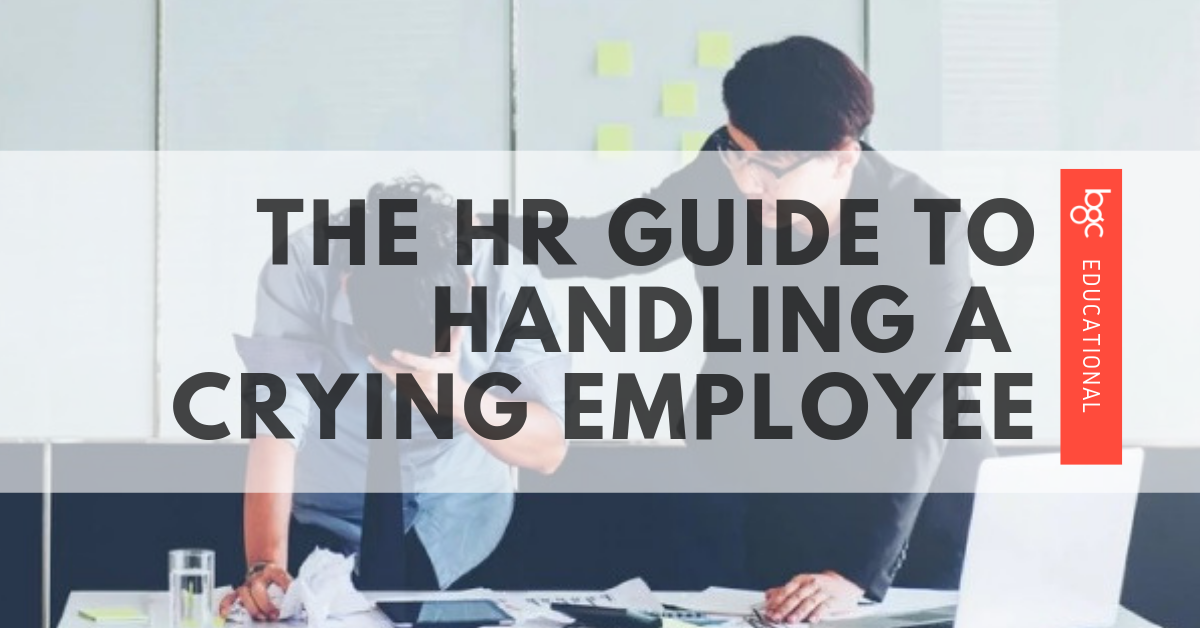Misery loves company. But in Singapore, crying on the job is still a taboo. It is reported that 8 in 10 workers admit to crying at work. Whilst a further 14% of those surveyed admit to crying at least once a week, at work.
Based on these reasons, it seems like this is a growing issue that most HR departments should take note of.
Why Employees Cry at Work

When we cry, we’re releasing our “emotions”. This does not necessarily refer to negative emotions, but rather emotions in general. Which can include happiness, sadness, anger, joy, and even relief. So why do employees break down at work? Most are driven to tears either by a colleague or their boss. In addition, workers who cried at work reported that they’ve held jobs that they felt wasn’t a good fit for them. But crying is complex and feelings will sometimes just need to come...out. 19% of employees surveyed blamed personal issues as another reason they might break down at work.
Other reasons employees break down at work include:
-
Workload: Many people feel overwhelmed at work. This boils down to the workload available. If this is the case, as an employee, you should consider talking to your boss about how to lighten your workload.
-
Workplace Bullying: To some, the office might feel like high school all over again. Workplace bullying is a growing issue. Workplace bullying can be characterized as offensive, intimidating, malicious, or insulting behavior.
Examples of workplace bullying include racial harassment, gender harassment, or other forms of abuse such as physical violence, psychological abuse, or sexual harassment.
-
Unmanageable Clients/Customers: Managing client and/or customer expectations can be tough for some.
-
Error at Work: We’re only human. And this, unfortunately, means that sometimes we make mistakes at work. Which can inevitably feel like the end of the world.
How HR Should Handle “the Storm”

Growing up in Singapore, we’ve always been told that emotions should not be expressed in the workplace. Seeing someone cry at work can often be confusing and upsetting to other coworkers. As a recruitment agency that focuses on the well-being of both our candidates and employees. Here are the steps you need to take in order to handle a crying employee:
1. Isolate the individual and let the storm pass

When an employee or a colleague is in distress. They sometimes fail to realise that there are people around them who could be affected by the distressed individual. Save them the trouble and take them somewhere else to finish crying in a way that’s appropriate for the workplace. Alternatively, you can also ask the distressed employee to go out for a walk or buy a coffee, to help them calm down.
Pro-Tip: Take the time to remind the employee that crying in the office does not necessarily mean that they’re going through an emotional breakdown. Crying is a natural reaction to a body that is reacting to pressure.
2. Analyze the situation

As someone tasked with taking care of the workplace’s harmonious environment, you’ll want to get to the bottom of the situation. Ideally, you’ll want to ask:
-
Who was there?
-
Who said what?
-
What happened?
Think of the outburst as a crime scene. Your job right now is to examine the crime scene and take the time to find out what really happened.
Pro-Tip: Remember to stay calm and focused throughout the event. You want to remain as objective as possible in order to find out what actually happened.
3. Find the trigger

Try and identify the main trigger. You need to find out what made the worker cry and then determine if it is a workplace issue or not. If no discernable trigger can be found, it’s time for you to take on the role of a detective and investigate the employee’s behavior and mood leading up to the incident.
However, you don’t want to come across as a busybody. Refrain from throwing out open-ended questions such as:
-
What’s this all about?
-
Why are you cry?
Instead, ask questions that show both concern and compassion. You want to make it clear to the employee that you’re there to listen and help. Some examples are:
-
Is there anything you’d like for me to know?
-
How can I help out?
4. Set a course of action

By now, you’re probably aware of the cause of the distress. If it is a workplace-related issue (e.g. workplace bullying), inform your coworker of the next steps that your organization will follow through with.
5. Follow up and move forward

After the incident, find the time, later in the day. If the incident happened earlier in the morning, you might want to follow up casually during lunch. Checking in is key - and so is it’s timeliness. Checking in a week or go forbid, a month after the incident might come off across as being abrasive or being uninterested in a serious situation.
Don’t refrain from following up even if the employee confided regarding a personal situation. Just ensure that the follow up takes place somewhere. Seeing someone shed tears in front of you might not be a pleasant experience. By showing both concern and empathy might be able to further strengthen the employee’s relationship with both you and the organization.
Care to share your thoughts regarding this article? Let us know in the comments section below!
